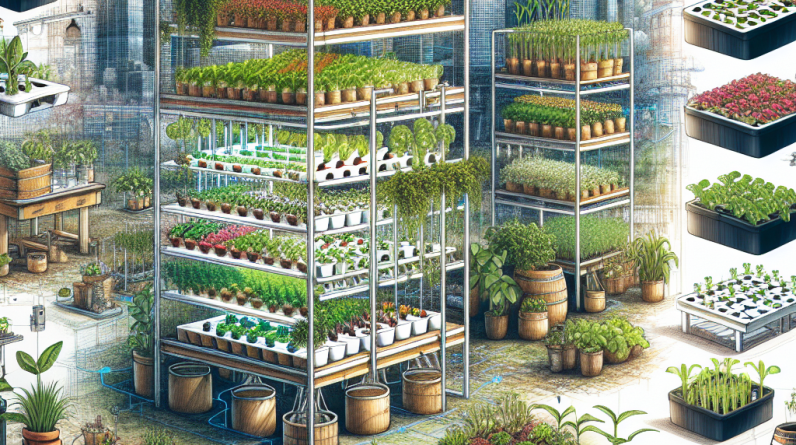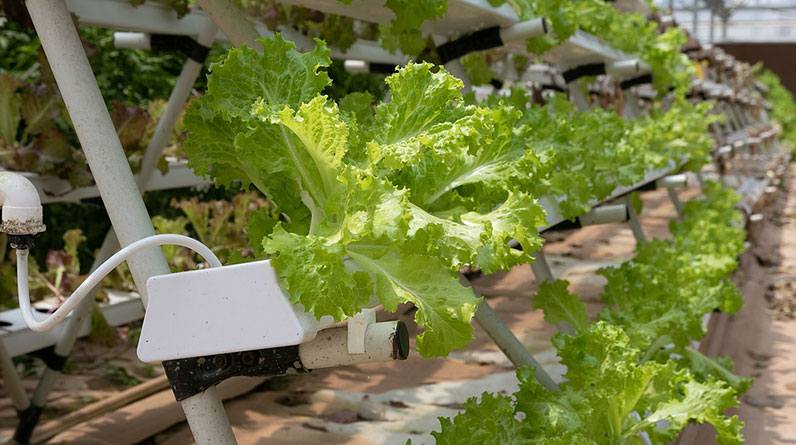
Hey there! Let me share my journey into the world of hydroponics and how I discovered the magic of combining organic practices with pest management. Trust me, it’s a game-changer! I believe these approaches not only help in maintaining pest control but also promote a healthier growing environment for our green buddies.
Utilizing Beneficial Insects
Getting to Know Beneficial Bugs
First off, let’s talk about my introduction to beneficial insects. When I first started my hydroponic journey, I realized that controlling pests is crucial for plant health. Instead of reaching for chemical pesticides, I learned about the importance of natural predators. Ladybugs and lacewings are excellent allies in this battle!
These little helpers are like the superheroes of the garden! They feast on common pests like aphids and spider mites, helping keep populations under control without harming my plants. I remember the first time I released ladybugs into my hydroponic setup; I could practically feel them doing a happy dance in there!
The experience of watching them work is something else. It’s like having a pest control army at my disposal, and it didn’t cost me a fortune. Just be sure to research which beneficial insects work best for your specific pest problems. Not every bug is going to be helpful!
Creating a Suitable Environment
After getting the bugs, I had to look into their living conditions. Just placing them in my system wasn’t enough. They thrive better when their habitat mimics the environment they like. Think about it—if I was taken from my comfy home to a cold, sterile place, I wouldn’t be happy either!
I made sure to provide some host plants for them to hang out on. In my case, I used some dill and fennel as a ‘crash pad’ for my ladybugs. This gave them a soft landing and ensured they stayed around to munch on the pests instead of flying off in search of food.
And don’t forget to consider humidity and temperature; these factors greatly affect beneficial insects’ activity. Keeping the environment balanced helps them do their job better. Over time, I saw a significant reduction in pest populations, and my plants thrived!
Monitoring and Adjusting Populations
The next step was monitoring my new pest control squad. Just like me keeping tabs on my friends, I needed to ensure my ladybugs weren’t heading off to greener pastures. I set up observation times—just a few minutes to scan my plants and see how things were going.
If I noticed any pest outbreaks, I could always adjust the number of insects released. It’s essential to find that sweet spot; too many beneficials can lead to competition for resources. I learned that patience and careful watching are key!
Integrating beneficial insects into my hydroponic system turned out to be rewarding in ways I hadn’t envisioned. They not only helped with pest control but also let me feel like a proud parent watching over a lively, engaged family!
Implementing Organic Treatments
Choosing Natural Remedies
Once I got a handle on the beneficial insects, I looked to organic treatments as my next line of defense. There’s a whole pantry of natural remedies out there; I couldn’t believe what I could whip up just from items in my kitchen! Neem oil is one gem that I incorporated into my routine.
It’s super effective against a range of pests and can even help with fungal issues. I mixed it with some water and a tiny bit of soap to create my own spray. Not only was it economical, but it was also easy to apply, and my plants didn’t seem to mind one bit!
There are so many organic options available, like diatomaceous earth, garlic sprays, and even essential oils. It felt good knowing I was treating pest issues without harmful chemicals, adding a healthier touch to my hydroponic setup.
Application Techniques
With the recipes in hand, I needed to figure out how to apply these organic solutions. I learned the hard way that timing is everything! Early mornings or late evenings are ideal since beneficial insects are less active, and the sun won’t burn the leaves as I spray.
I invested in a quality spray bottle to ensure an even application, and I often found myself dancing in the garden while applying my mixes—who said gardening couldn’t be fun? Just remember to wear gloves and a mask; safety first!
And here’s a tip: always test on a small area beforegoing full spray mode. This precaution ensures that my plants wouldn’t have an unexpected reaction. Over time, I became better at knowing the right amount and frequency of application, balancing between pest management and plant health.
Documenting and Analyzing Results
I can’t stress enough how important it is to keep a detailed journal alongside this process. I documented everything! What treatments I used, how often I applied them, and the results I saw over time. This practice not only kept me organized but also helped me figure out what worked best.
Being able to see my progress over weeks and months was super encouraging. I began to recognize patterns, like which pests would appear at certain times of the season. Ultimately, this knowledge gave me confidence in my organic pest management journey.
Plus, it’s satisfying to look back on those entries. Seeing the transformations my plants underwent makes the trials and errors worth it. And who doesn’t love a good success story?
Maintaining Healthy Growing Conditions
Monitoring Nutrient Levels
One of the key things I learned in pest management is that healthy plants are less prone to infestations. This is where nutrient monitoring comes in. I invested in some handy testing kits to check the pH and nutrient levels regularly.
By providing my plants with a balanced diet, much like I would for myself, I noticed fewer pest issues overall! Healthier plants mean robust immune responses. It’s a win-win in my eyes—better yields and fewer bugs, who would complain about that?
It’s fascinating how nutrient deficiencies can manifest as pests. At first, I thought my plants just needed more care when I found issues. But a quick test revealed my plants were nutrient-starved! I suggest practicing this more often than not, as it can save time and headaches down the line.
Ensuring Proper Airflow and Humidity
Another major aspect I had to keep an eye on was airflow and humidity. I learned that damp, stagnant air is a hotbed for pests and diseases. So, I made sure to have a proper setup with adequate ventilation to promote healthier growing conditions.
I used fans to keep the air circulating throughout my hydroponic system. Additionally, I was careful about not overcrowding my plants, giving them enough breathing room! After all, no one likes to be crammed into a tiny space.
Moreover, investing in hygrometers helped me monitor humidity levels. A balanced environment not only promotes strong plants but also keeps those annoying pests at bay. It truly was a lesson in how little tweaks can lead to bigger results!
Regular Inspection and Maintenance
Lastly, I made a habit of conducting regular inspections. This practice became part of my routine; I’d simply walk around, checking for any signs of pests or diseases. I discovered that catching issues early made a huge difference!
Each week, I’d take a closer look at the leaves, stems, and roots. If any new friends (read: pests) showed up, I dealt with them right away using my beneficial insects or organic treatments. No pest stood a chance!
Not only did this proactive approach help keep my garden pest-free, but it also kept me connected with my plants. I swear, each time I checked in on them, I felt like a proud gardener watching my green babies grow and thrive!
Conclusion and FAQs
Incorporating organic practices into hydroponic pest management was truly a journey. The combination of beneficial insects, organic treatments, and maintaining healthy conditions made a world of difference. I hope these tips help you as much as they’ve helped me!
FAQs
- What are beneficial insects and how do they help? Beneficial insects like ladybugs and lacewings are natural predators that help control pest populations in your garden, providing a chemical-free method of pest management.
- Can you share some organic treatments for pests? Sure! Some popular organic treatments include neem oil, diatomaceous earth, and garlic sprays. They are effective against various pests and healthier for the plants.
- How often should I inspect my hydroponic plants? Regular inspections should ideally be carried out weekly, allowing you to catch any issues before they become bigger problems.
- Do healthy plants really attract fewer pests? Yes! Healthy, well-nourished plants are more resilient and better equipped to withstand pest attacks, making them less attractive targets for infestations.
- What should I do if my beneficial insects aren’t working? If beneficial insects aren’t adequately managing your pest problem, reassess your insect population and the conditions they are living in. You may need to adjust your approach or try additional organic treatments.







